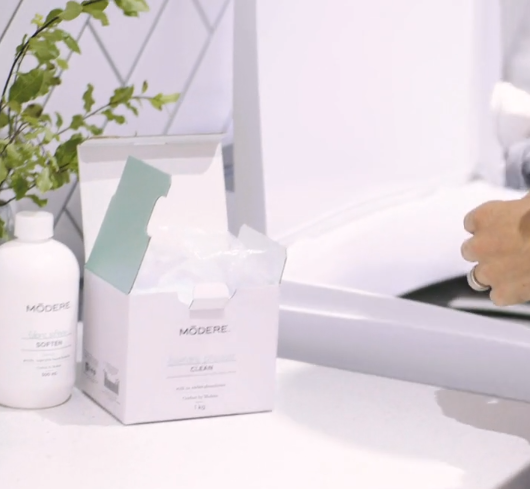In a world that often tiptoes around the topic of women’s health, it’s time to unleash a powerful narrative that has been muted for far too long—the story of menstrual phases. This blog beckons you to step beyond the shadows into a space where discussions about menstrual health aren’t just normalised; they are hailed as transformative agents, breaking barriers, and nurturing empowerment. Along the journey from adolescence to adulthood, the menstrual cycle emerges not just as a biological rhythm but as a vital, life-affirming force. Join us as we unravel the layers of what society deems “normal” during these phases, confront misconceptions, and exalt the profound strength that arises from dismantling barricades in conversations about women’s health.
The Menstrual Cycle Unveiled
Typically spanning around 28 days, the menstrual cycle is divided into four phases: menstruation, the follicular phase, ovulation, and the luteal phase. In understanding the physiological nuances of each menstrual phase, you can unveil a narrative that extends beyond mere biology. It’s a journey of self-discovery, a connection with the ebb and flow of your body, and empowerment that comes from embracing the cyclical nature of womanhood.
- Menstruation: Embracing the Beginning
Menstruation is a fundamental and natural process lasting around 3 to 7 days. During this phase, your uterus gracefully sheds its lining, signifying the completion of one cycle and the beginning of another. Beyond its physical manifestation, menstruation holds emotional and symbolic weight. While it is often misunderstood and unjustly stigmatised, this phase is a symbol of health and fertility.
- Follicular Phase: Nurturing Growth
Moving into the follicular phase, which spans approximately 7 to 14 days, your body gears up for potential pregnancy. Estrogen takes centre stage, fostering the growth of the uterine lining. This phase is characterised by a sense of renewal and anticipation. As estrogen levels rise, you may experience a surge in energy, optimism, and heightened focus. Connecting with your body during this phase involves recognising signs of fertility—observing changes in cervical mucus and tracking basal body temperature. It’s a time of nurturing growth not just in the body but in your connection with the recurring aspects of being a woman.
- Ovulation: The Fertile Window
Ovulation, a brief yet impactful window lasting about 24 to 48 hours, marks the release of an egg and the peak of fertility. This phase typically occurs around the middle of the menstrual cycle. Understanding your body’s fertile window is crucial for both family planning and a deeper connection with your reproductive health. Physically, you might experience heightened senses and a subtle twinge on one side of the pelvis (mittelschmerz), indicating which alternating ovary is releasing an egg. Beyond the physiological aspects, embracing this phase is an empowering journey—a revelation that aligns you with the innate strength and beauty within your physiology.
- Luteal Phase: Preparing for a New Cycle
Lastly, you enter the luteal phase, lasting approximately 10 to 14 days. Hormonal shifts now prepare the body for either pregnancy or the initiation of a new cycle. Emotionally, you might experience a mix of heightened sensitivity and introspection. Recognising and accepting these emotional and physical changes during the luteal phase contributes to overall well-being. Acknowledging the delicate balance of hormones and emotions empowers you to navigate this phase with grace. As the cycle concludes, the body readies itself for menstruation once more, bringing the cycle full circle.
Redefining “Normal” in Women’s Health and Menstruation
Society often weaves a rigid narrative, dictating narrow confines around what is considered “normal” during menstruation. But what if you dared to unravel these preconceived notions, embracing a spectrum of diverse experiences?
Through the phases of a woman’s life, the menstrual cycle emerges as a poignant and personal journey. It’s a call to action, urging you to question and redefine what is normal during these essential periods.
- Women’s Health Products: Choices and Freedom
The conversation about women’s health products resonates with the overarching plea for inclusivity, acknowledging the diverse preferences and needs among women. It’s high time to break the silence and dismantle the stigma, creating an environment that encourages individuals to choose their own personalised solutions from a comprehensive spectrum of options catering to every preference. From menstrual cups and reusable pads to tailored supplementation designed specifically for women, it’s about fostering a harmonious coexistence of options in a more supportive and understanding space.
- Beyond Convenience, Towards Conscious Living:
The choices we make extend beyond personal convenience; they have profound implications for environmental well-being. Sustainable products serve not only as alternatives but also as ambassadors of a more conscious way of living. Exploring and championing these options aligns with a larger conversation about eco-conscious choices that echo in every aspect of our lives.
- Pain and Discomfort: Redefining the Norm
Physical discomfort during menstruation is often considered commonplace, yet largely left unspoken. What if you dared to challenge this status quo? Normalising discussions about menstrual discomfort becomes a revolutionary act—an acknowledgment that discomfort, when excessive, may be a signal of something deeper.
By dismantling the taboos around menstrual pain, we empower women to navigate their well-being with awareness and agency.
Breaking Barriers: The Power of Open Conversations
Education stands as a formidable tool for empowerment, capable of breaking the shackles of misinformation surrounding the menstrual cycle. In schools, families, and communities, providing comprehensive and accurate information becomes a pivotal step. Through targeted educational programs within schools, covering not only the physiological aspects but also delving into reproductive anatomy and the emotional intricacies of the menstrual cycle, we empower young girls with the knowledge essential for navigating their reproductive health. Simultaneously, within families, fostering an open space for discussions about menstruation helps to normalize the topic from an early age. Parents and guardians hold a crucial role in this transformative process, acting as the architects of attitudes toward women’s health. Beyond the familial unit, community initiatives can further contribute to this educational landscape. Engaging in workshops and awareness campaigns within local communities becomes a collective effort to dismantle taboos surrounding menstrual health, fostering a supportive environment for women and girls.
A comprehensive and collaborative approach to destigmatising menstrual health involves the cooperation of both individuals and society as a whole in reshaping cultural perceptions. The impact of media is profound in shaping societal attitudes, making it crucial to encourage accurate and positive representation of menstruation. By challenging stereotypes and fostering a culture of acceptance through media outlets, we can contribute to a significant shift in how society views menstrual health. Additionally, it’s imperative to recognise the role of men as valuable allies in breaking menstrual health taboos. Encouraging open communication between genders serves as a bridge towards understanding and empathy, breaking down barriers that have persisted for far too long. In tandem, these initiatives form a multifaceted strategy to destigmatise menstrual health, creating a more inclusive and accepting society.
Together, we possess the ability to redefine the concept of “normal” and cultivate a world where women’s health is not just a subject but a beacon of open, respectful, and enlightened dialogue. With each candid conversation and shared nugget of knowledge, we can contribute to a future where the veil of secrecy surrounding menstrual health is lifted, transforming it into a celebrated facet of women’s overall well-being.










